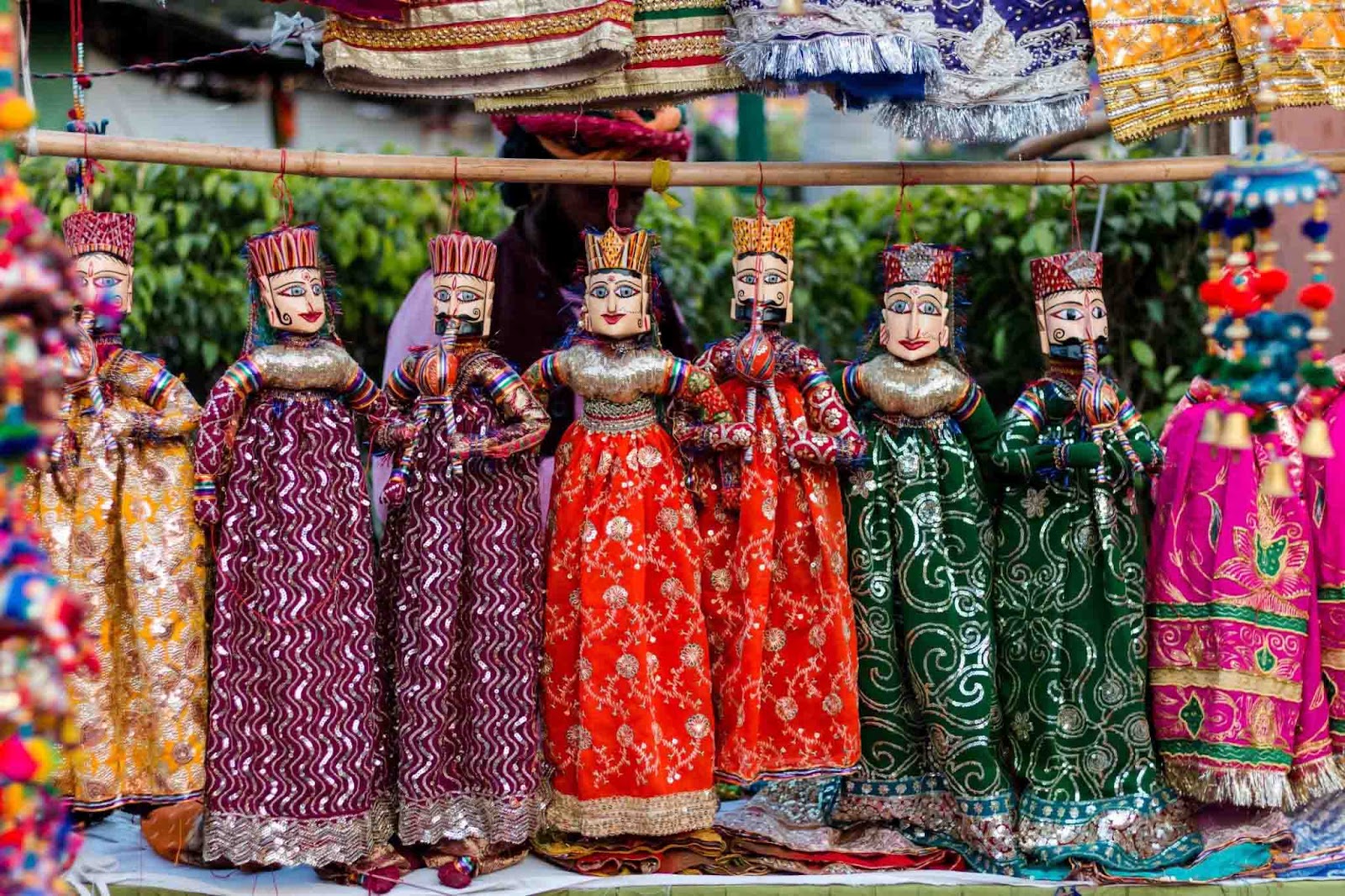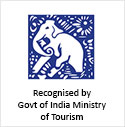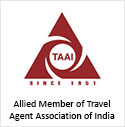
Rajasthan is known for its exquisite architectural splendor. Highly developed musical and dancing styles are a tradition in Rajasthan. Rajasthan's tradition and culture are deeply rooted in folk music. Simple, natural music that reflects daily tasks is played. The ghoomar dance from Udaipur and the kalbeliya dance from Jaisalmer have both attracted attention abroad.
One of India's most picturesque tourist attractions in Rajasthan. Each year, the state attracts a large number of tourists because of its palaces and forts. The fascinating histories of the monarchs, their kingdoms, and Rajasthan's vibrant culture are hidden behind each palace and fort. In 2013, UNESCO designated six of the forts as World Heritage Sites: Chittorgarh Fort, Kumbhalgarh Fort, Ranthambhore Fort, Gagaron Fort, Amber Fort, and Jaisalmer Fort.
10 Parts of Rajasthan’s Culture and Tradition That Make it More Exciting

1. Welcoming the Guests (Atithi Devo Bhava)
It is said that you should treat your guests as you would treat God or Atithi Devo bhava. This idea is a component of Rajasthani culture and tradition. They provide excellent service to their visitors and encourage them to return. The majority of people in Rajasthan work in the tourism industry, thus they take this principle very seriously because they depend on tourists for their income and have made a commitment to providing for them. Welcome to my nation is the literal translation of the well-known folk song "Padharo Mhare Desh." The hospitality of Rajasthan is well known worldwide.

2. Folk Dance and Music
Since Rajasthan was under the control of numerous kings, each region has its distinct folk culture. Due to geographical restrictions, Rajasthani folk music and dance are related but distinct in their individual styles. Two significant ethnic groups that have influenced Rajasthani folk music are the Manganiyars and Langas. They perform "ragas" (songs) for various reasons. Similar to when the pre-monsoon season was in full swing, they would dance ragas to invoke the rain. Banjaras, Mirasis, Jogis, and numerous more well-known groups are examples.
They play a variety of traditional instruments, such as the sarangi, kamayach, dhols, shenhai, and been. The dance itself is diverse. Various tribes have different dances. The king and the populace were primarily entertained by it. Chang, Ghoomer, Bhopa, Tejali, and Kathipuli are a few of the dances. The Ghoomer dance, which has its roots in Udaipur, has become well-known and admired throughout the world.

3. Food and Cuisine of Rajasthan
Certain dishes are essential to try as a traveler. The rich spices and sweetness of Rajasthani cuisine are well-known. Dalbati, a meal made of dal and wheat flour mixed with yogurt and topped with ghee, is what makes Rajasthan so well-known. In Rajasthan, there are two types of kachori: sweet and spicy.
Most restaurants in Rajasthan provide the delicious sweet foods ghewar and gheriya, which originate from Mewar. Ghee is a common ingredient in Rajasthani cuisine. Rajasthan is one of the states in India with the highest percentage of Lacto vegetarians at over 70%. Lal Maas and Mohan Maas, however, are specialties in Rajasthani cuisine and are not vegetarian.
4. Architecture
Rajasthan's culture and tradition is as diverse as its architectural styles. You may see some excellent examples of Islamic, Hindu, colonial, and even contemporary architecture. Rajasthan should be your next trip destination if you love architecture and appreciate iconic buildings, historical sites, and a variety of design styles. The Ranakpur Jain temple was erected in the fifteenth century. M'ru-Gurjara architecture is a style that features a variety of structures and forms. It features numerous domes and sculptures that are typical of western Indian architecture on the pillars and ceiling.
5. Famous Tourist Attractions
The historical forts, palaces, art, culture, and heritage of Rajasthan make it one of the most sought-after travel destinations in India. Among the most popular tourist locations for both domestic and international travelers are the palaces of Jaipur, the lakes of Udaipur, and the forts located in the deserts of Jodhpur, Bikaner, and Jaisalmer.
The state's fairs and festivals, especially the Desert Festivals, Pushkar Fair, Marwar Festival, and Camel Festival, offer the best opportunities to experience this rich artistic talent.

6. Handicrafts
Make sure to set aside a few hours or even a whole day for shopping if you go to Rajasthan. Beautiful carpets, clothes, jewelry, and other items manufactured by the locals can be found there. They use it to make notebooks, shoes, and bags, but typically any leather product is made of camel leather. The carpets are hand-knitted and resemble Persian carpets in that they feature a geometric pattern and borders. Additionally, there are a lot of little toys and decorative objects with bells made of red sand or clay. You can purchase safah or pagri as a memento at the majority of businesses.
7. Camels and Camel Festivities
In Rajasthan, camels are a frequent species to see. Due to their biology, camels are desert creatures that are designed to endure situations like a lack of water, strong winds, intense heat, and low temperatures. Most camps in Rajasthan offer camel rides, allowing you to see firsthand how well camels can move over the desert thanks to their long legs. Every year, camel fairs are held in places like Bikaner, Pushkar, and others. It's a sort of festival or celebration honoring the owners of the ships of the desert. There are many activities and competitions carried out for enjoyment like camel race and camel dance. These events typically last two days.

8. Rajasthani Costumes
Men typically don dhotis, kurtas, angarkhas, and paggar or safa-style turbans as headgear. Dhoti is frequently replaced by traditional Chudidar pajama pants in various locales. Women dress in long ghagra skirts and kanchli tops. The vastness of Rajasthan, however, causes a difference in clothing and fashion. In the Marwar Jodhpur area, Shekhawati Jaipur area, or Hadoti Bundi area, dhotis are worn in various ways. Although both pagri and safa are headdresses from Rajasthan, there are certain differences between them as well. Mewar has a paggar tradition, while Marwar has a safa tradition of Rajasthan.
9. Birth and Death Customs
The Rajasthani people celebrate "Samskaras." A samskara is an occasion that marks a turning point in a person's life. They celebrate a total of 16 occasions. When a child is born, copper plates are pounded together in jubilation, and celebratory gunfire is fired to proclaim the birth of the child. Eleven days after birth, the kid is given a name. "Namkaran" is the name for this.
10. Language
The state of Rajasthan is mostly dependent on tourism-related revenue. As a result, the majority of people are fluent in either English, Hindi, or even both languages. The most well-known of these dialects are Marwari, which is one of several that come from Rajasthan, along with Malvi, Mevati, and Jaipuri/Dhundari. Rajasthan is a large state, yet living there will offer you a complete understanding of the Rajasthani people and their culture. Forts, other monuments, and other historical sites are a blessing to the state. Discovering the Maharajas' homeland requires a trip to Rajasthan.










